- The physical market for energy continues to be tight, demand continues to outpace supply
- Supply dynamics will likely outweigh any demand destruction and continue to push oil prices higher over the coming quarters
- The mid-term elections could be the catalyst for the next leg higher as the incentive for politicians to continue draining the Strategic Petroleum Reserve may be dwindling
- Given the structural undersupply of energy and the lack of capital expenditure and supply response by producers, the long-term case for energy is as bullish as ever
Plenty of reasons to be bullish on oil
Despite the impending economic slowdown continuing to pressure risk assets, energy commodities and energy-related stocks continue to outperform despite these headwinds. Fortunately for oil bulls, this trend looks set to continue. My preferred lens through which I analyze the oil and energy market constitutes several fundamental, technical, sentiment, and positioning indicators, which help provide valuable insight into the supply and demand dynamics across several time frames.
In particular, in assessing the outlook for oil, I emphasize the movements of crude oil inventories, the futures market term structure, the positioning of managed money and producers within the futures market, market technicals, and the macro outlook. Given there are a significant number of variables influencing the price of crude oil at any given time and the near impossibility of understanding all relevant information at all times, examining these areas of the market, I believe, provides a robust framework for assessing the outlook for oil prices and energy stocks.
Inventories
Inventories and the futures market term structure offer the best possible insight into the current real-time demand for crude oil. Inventories are drawn down when demand exceeds supply and vice versa. As is common when analyzing the energy markets, comparing inventory levels and changes in inventory levels relative to the five-year seasonal average is a useful way of assessing supply and demand whilst normalizing for the seasonal trends inherent in demand-sensitive commodities such as energy.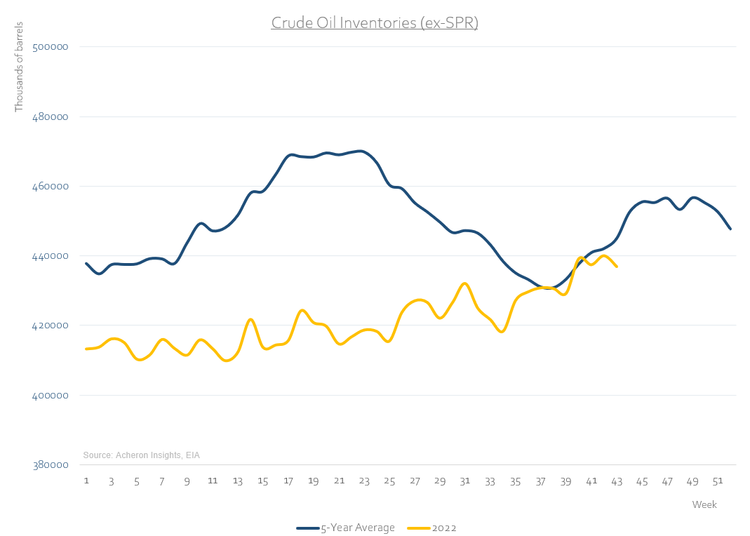
Though we saw a significant build in inventories throughout September as Biden continued to drain the Strategic Petroleum Reserve (a topic we will discuss in further detail below), inventories are again below their five-year seasonal average, as has been the case for much of the past 24 months.
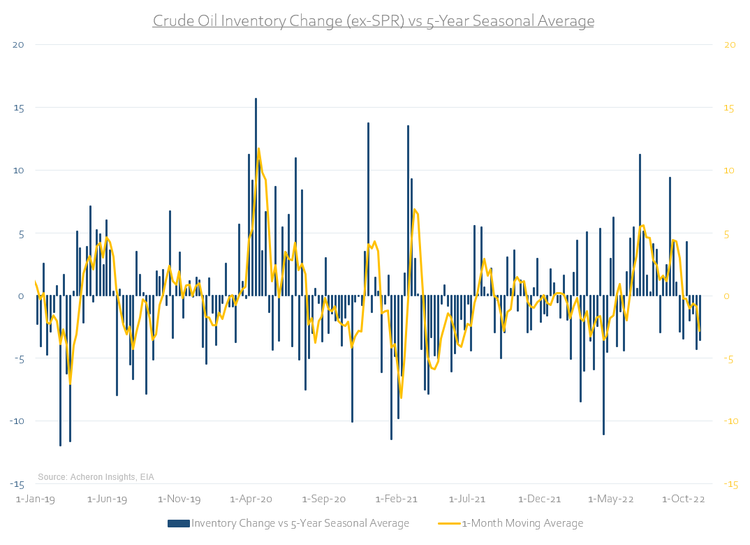
Term Structure
We can further extrapolate the physical market dynamics via the shape of the futures market term structure for crude oil. Currently, the term structure is in backwardation, meaning spot and shorter-dated delivery prices remain significantly above longer-dated contracts. This has been the case for some time now.
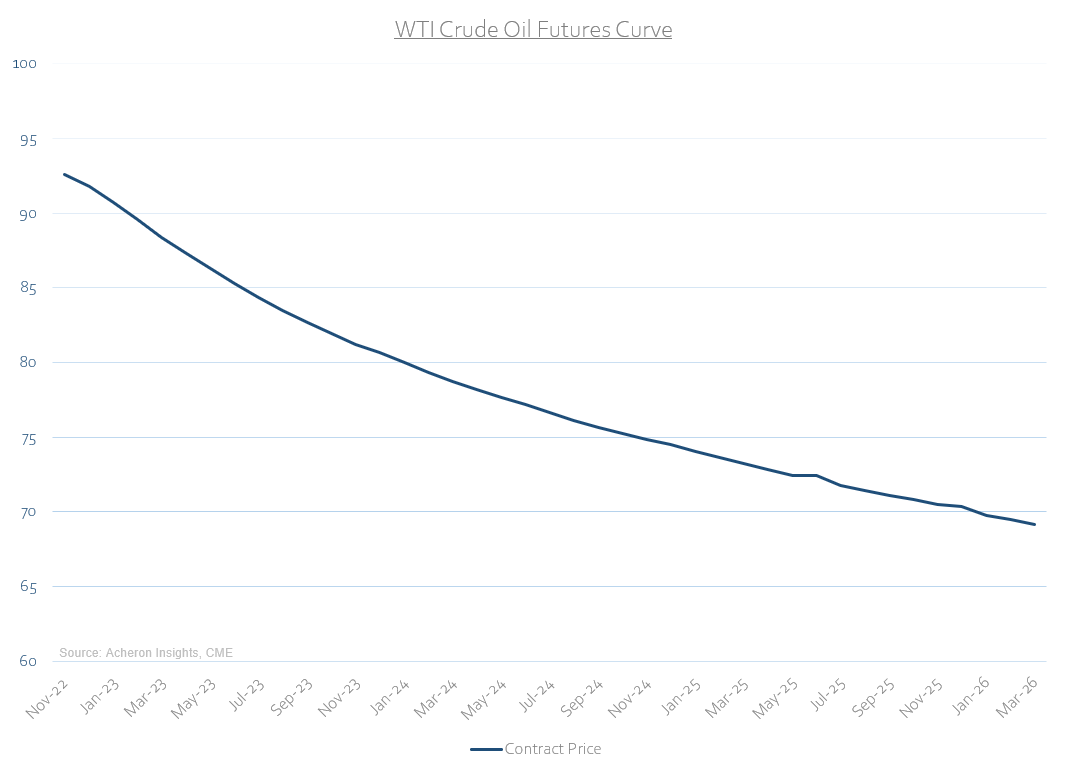
While the term structure is not a predictor of future prices, it provides valuable information into the underlying market fundamentals and demand and supply dynamics of the physical market at any given time. Generally, Backwardation implies there is a supply deficit as market participants are willing to pay a premium for instant delivery. As a result, any deficit will need to be met by drawing down inventories.
Backwardation in the term structure incentivizes drawdowns of oil inventories. However, it does not incentivize producers to increase production and capacity, as they would be forced to sell forward new production at a lower cost than today.
Therefore, any significant drop in oil demand would likely be accompanied by a flattening or steepening of the term structure. Right now, this is not the case. Additionally, it is important to note that historically, downside price action for crude oil and energy stocks is significantly lower when the futures curve is in backwardation, with the opposite being true when the curve is in contango. All notable market sell-offs in recent times have occurred after the 12-month calendar spread turned negative, as we can see below.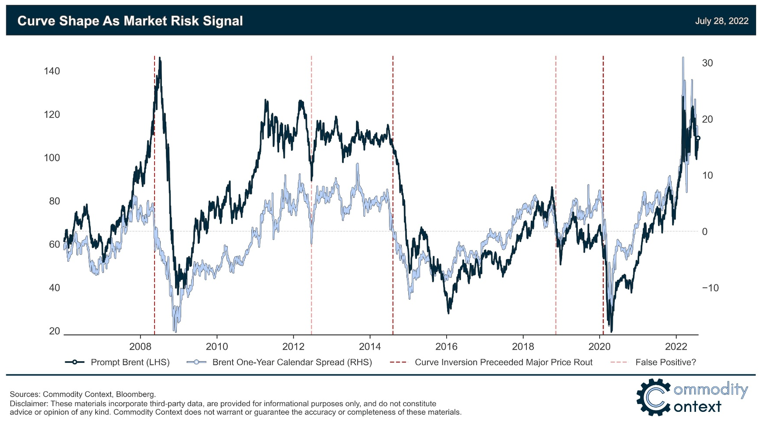
Clearly, the physical market's term structure and current state continue to signal a bullish outlook for energy.
Positioning
From a positioning perspective, the picture remains one that is largely positive. If we look at the speculative positioning of leveraged players in hedge funds and CTA’s (managed money), the recent pull-back in oil prices was accompanied by a significant unwinding in their long positions, as is often the case.
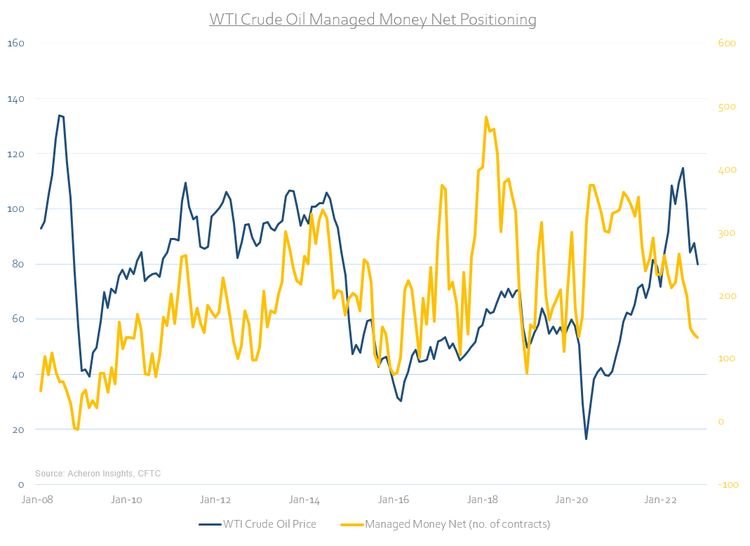
This development is constructive as the current managed money positioning is beginning to near levels indicative of contrarian buying opportunities in recent years, with leveraged long positions being the smallest seen since the onset of the COVID-19 lockdowns. Therefore, any positive price action from here would likely see a unwind of leveraged shorts, given their trend-following nature, a positive outcome for oil prices.
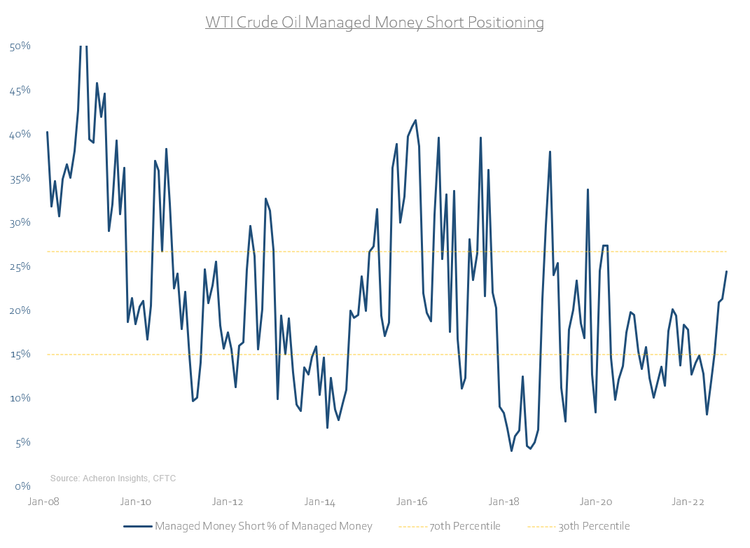
Furthermore, what is encouraging when looking at the market from a longer-term perspective is how commercial crude oil hedgers (i.e., the smart money) have reduced their short positions to the lowest point since early 2020, as illustrated below.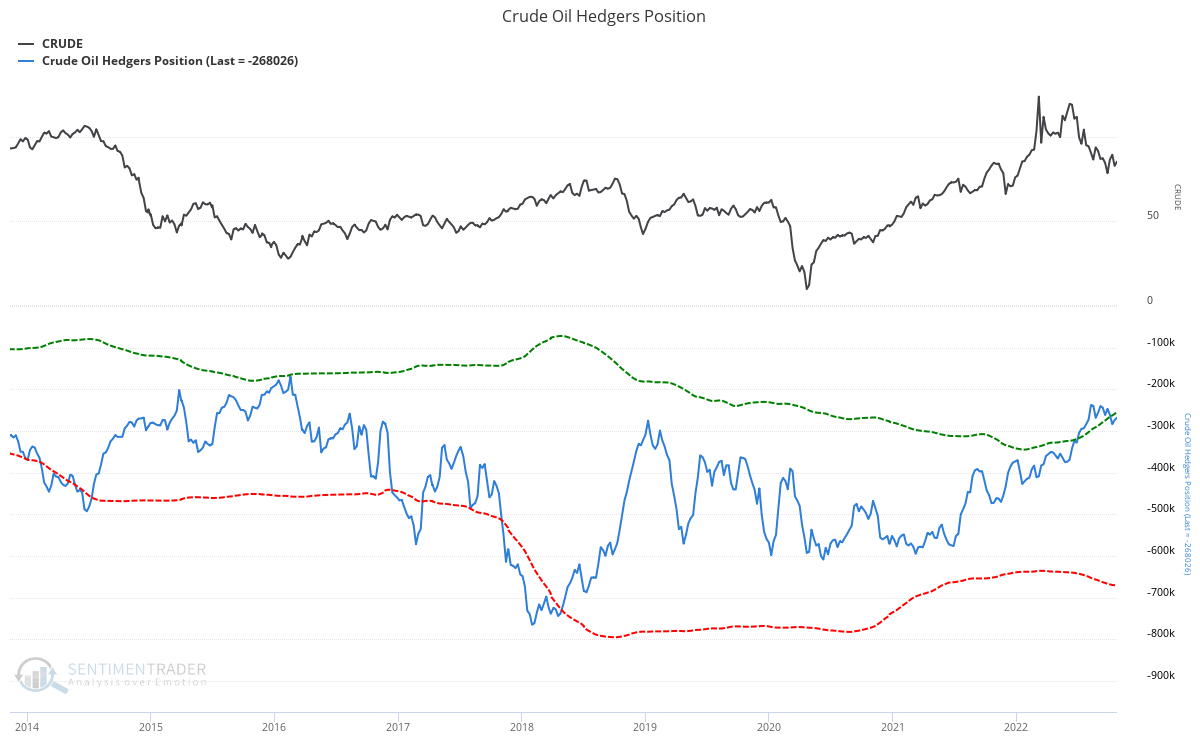
Technicals
From a technical perspective, price action over this past week has seen oil prices break out of their recent downtrend, with overhead resistance now around the $92-$93 area. However, given we are not knocking on the door of overhead resistance and we have seen a DeMark daily 9 sequential sell signal, it appears likely a retest of the downtrend line from above is in order before we see a resumption of any move higher.
Should oil prices break out above this resistance level, the 200-day moving average appears the next short-term target. Continued breakouts above these levels would be bullish, and such technical developments will go a long way in assessing where the short to medium-term price action is headed for oil.
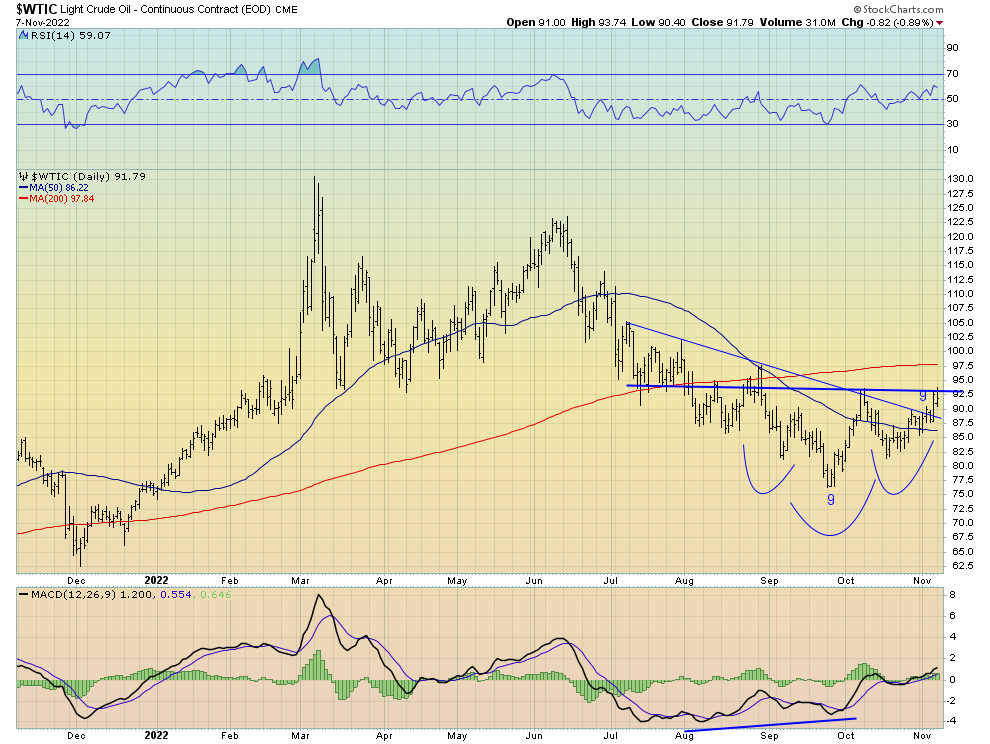
From a seasonality perspective, it is worth noting how the months of October through January tend to be the worst from a crude oil price perspective as the northern hemisphere’s summer driving season ends and the winter months begin. Though this dynamic is likely a headwind for energy prices, as I will detail further below, I suspect the supply dynamics are of more importance than seasonality for the time being.
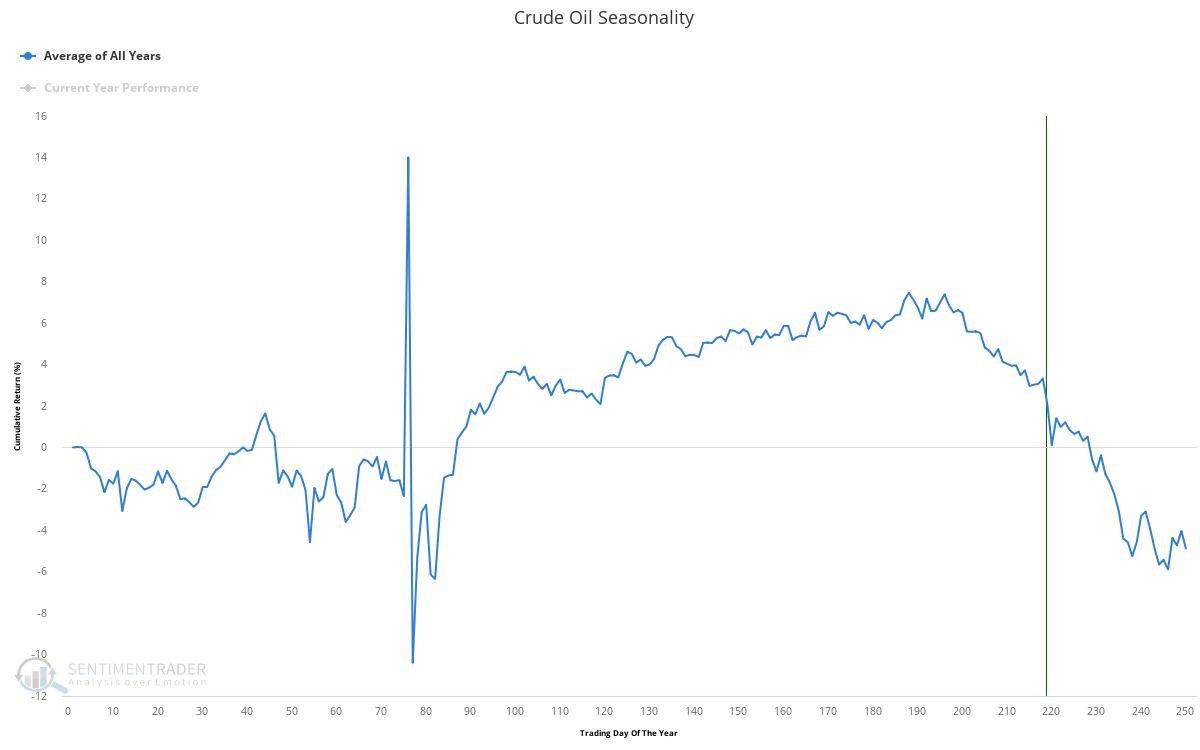
Demand destruction
Indeed, although demand destruction has likely played a small part of late in pushing energy prices lower as the economic slowdown continues, as is evident from the indicators of the physicals market, it is likely that supply is the driving factor for energy prices for now and will continue to be for the time being.
If we compare the recent price action of oil and copper prices as a means to assess this dynamic, we can see how crude oil prices have held up relatively well compared to copper.
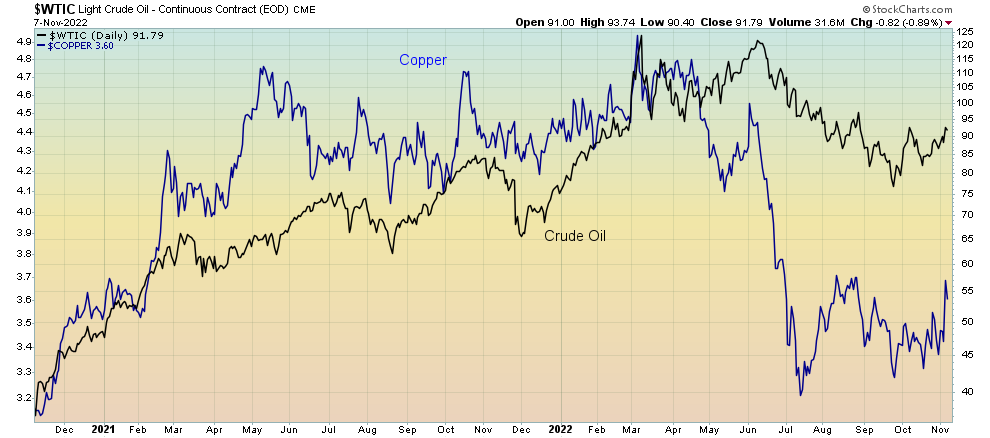
This relationship is a useful way to compare demand destruction in that crude oil prices are driven by both supply and demand over the short to medium-term, whilst copper prices are far more sensitive to demand (at least in the short-term) given they are more closely linked to industrial production, manufacturing and the business cycle. Importantly, when perhaps the world’s best oil trader Pierre Andurand confirms this notion, it pays to listen.
Catalyst For The Next Leg Higher?
When we couple this dynamic with the fact that much of the supply that has been made available in recent months is a result of the largest drawdown in the United States Strategic Petroleum Reserve in history, it is likely to be worrying, to say the least.
With the mid-term elections imminent and the motivation for Biden to further draw down the SPR to suppress energy prices perhaps ceasing, it is easy to understand how much upside there could be for oil prices and energy stocks in both the medium and short-term as politicians no longer use such tools as a means to buy votes.
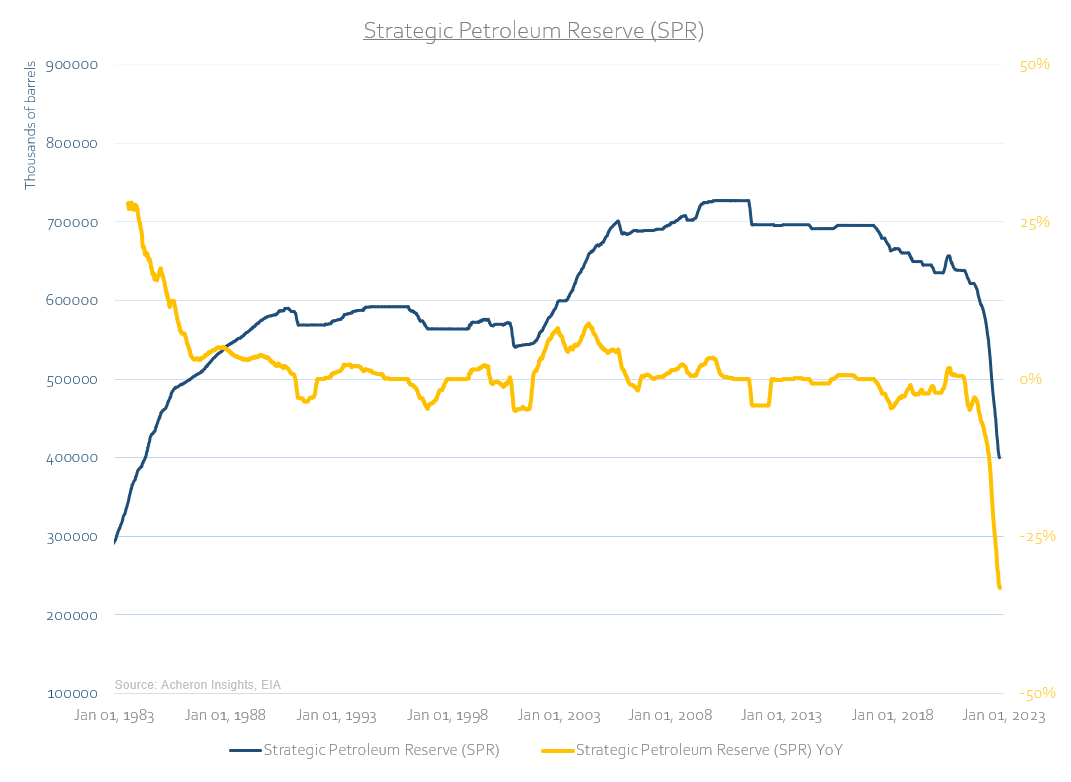
Such reliance on emergency stocks of oil supply is not a sustainable solution to an energy crisis. It is likely to only result in much pain in the months ahead, a sentiment echoed by the Saudi Energy Minister and JP Morgan’s Jamie Dimon.
Indeed, this dynamic has been reflected by the actions of traders through oil skew, which measures the implied volatility of puts relative to calls in the oil market. Options skew for oil has risen notably over the past week or two, meaning that call buying has been coming in as traders are keen to gain upside optionality to oil prices.
In recent years, when oil skew has repriced from puts to calls/neutral, this has generally been quite supportive of positive price action in the underlying going forward. The market may well be thinking there is a significant risk to the upside for crude prices following the mid-term elections.
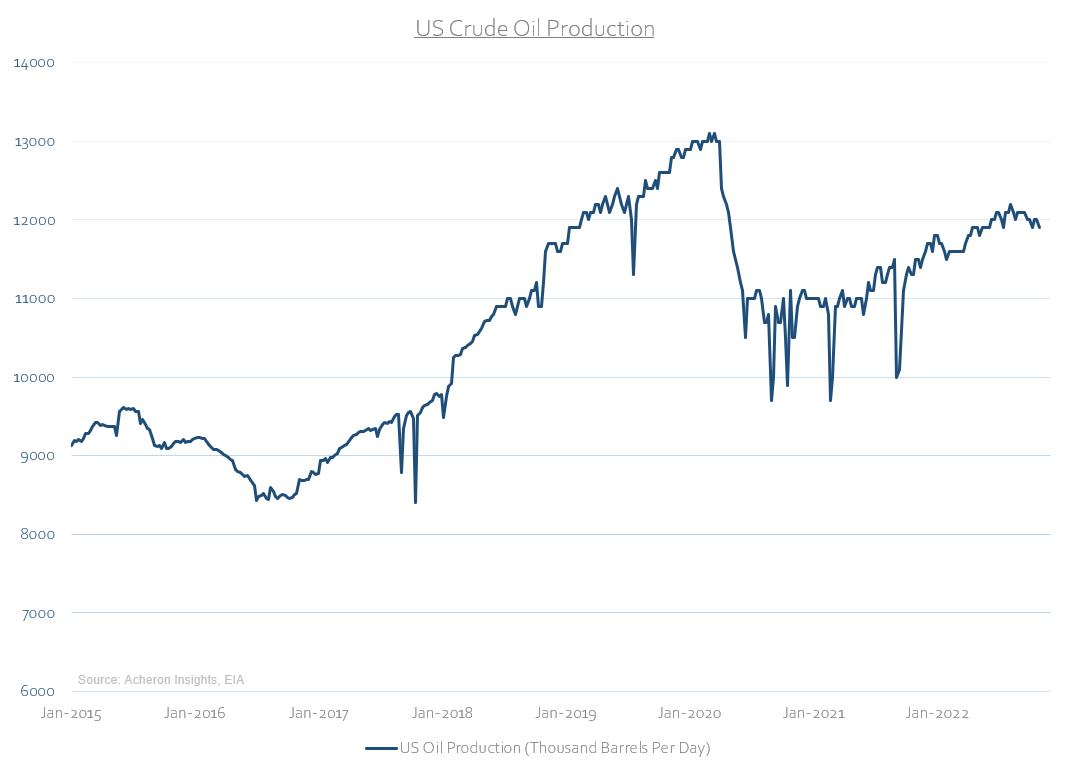
What’s more, the fact that US production has seemingly plateaued as the SPR has been emptied suggests that these SPR drawdowns may have, in fact, contributed to the curtailing of US production, highlighting the folly of what has been a short-term move that will not solve a long-term issue of structural undersupply. Kicking the can down the road, as it were.
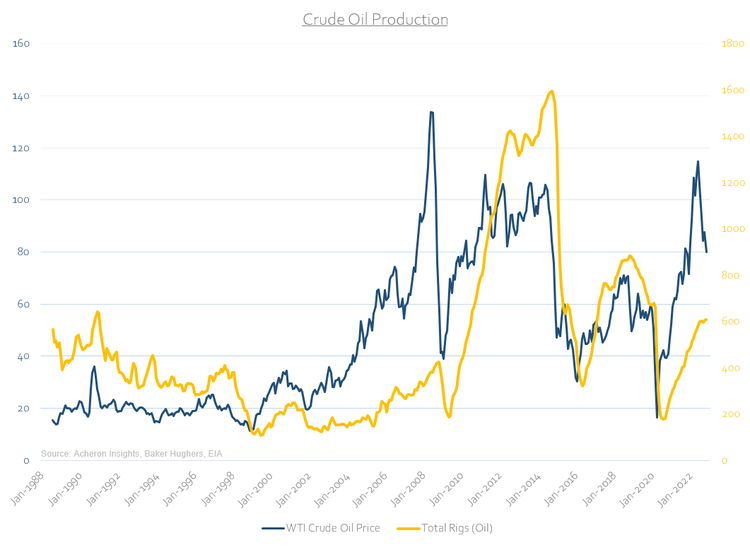
Indeed, from a longer-term perspective, the fundamental case for holding oil and oil-related energy stocks remains as bullish as ever. Put simply, we have not seen any increase in capital expenditure and production sufficient to generate any meaningful and sustainable supply response in the coming years. Until we do, it will continue to pay to be long energy.
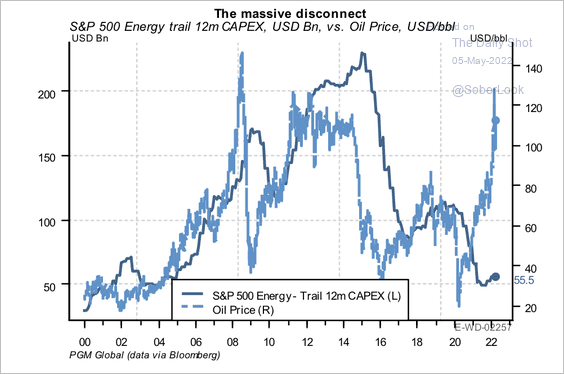
Source: @SoberLook, @JesseFelder
